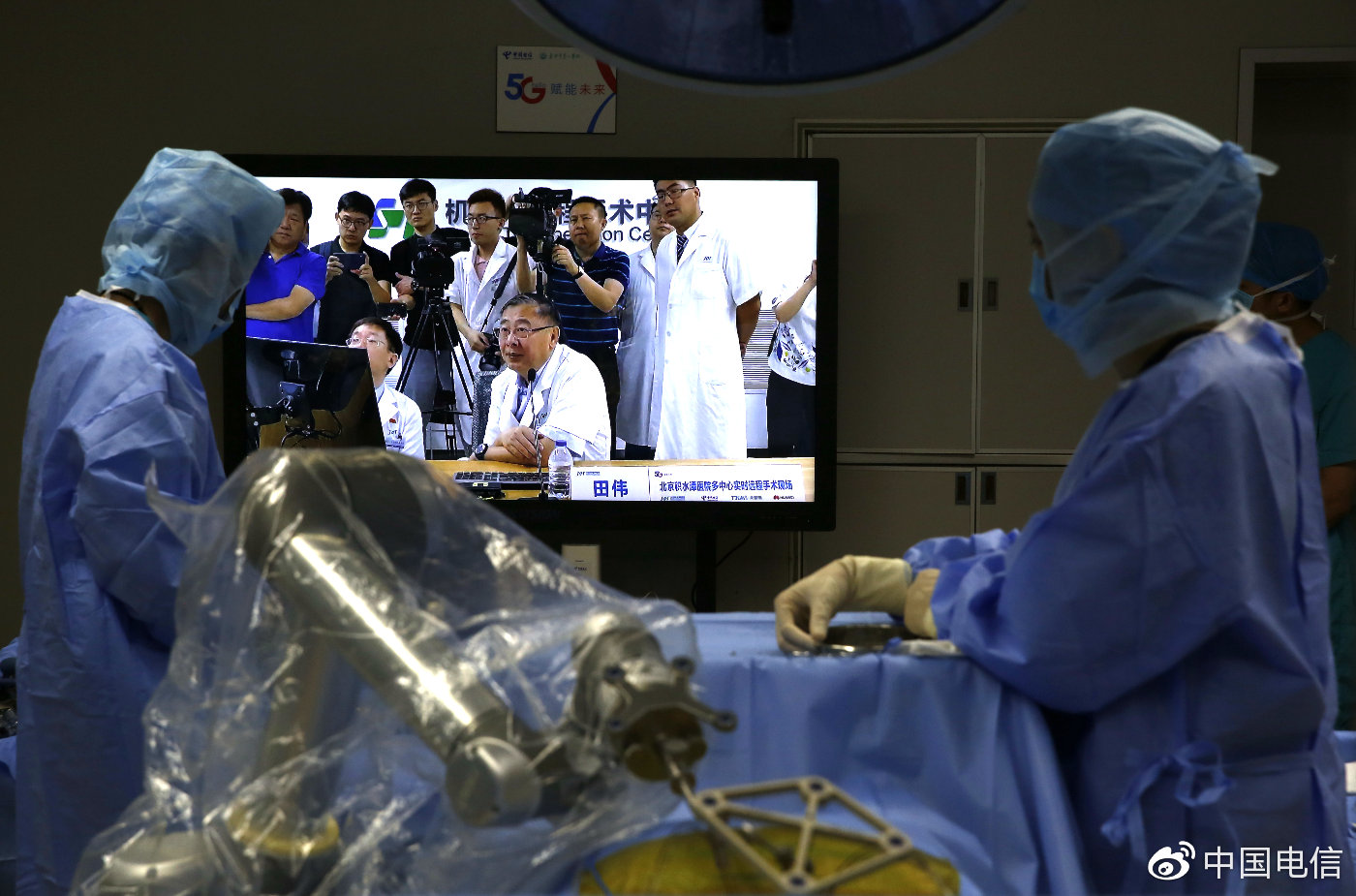China Telecom's 5G Helped Beijing Jishuitan Hospital Perform the World's First Remote Robotic Surgery
On June 27, 2019, Tian Wei, president of Beijing Jishuitan Hospital, performed the world's first ever remote surgery in the hospital's Robot Teleoperation Center, using orthopedic surgery robots. This surgery used China Telecom's 5G and Huawei's communications technology to connect Beijing Jishuitan Hospital with the Yantaishan Hospital of Shandong and the Jiaxing No. 2 Hospital of Zhejiang. The success of this surgery suggested that the application of 5G and AI in remote healthcare has reached a new level.

The remote surgery began at 9:05. The patient in Jiaxing had a fractured lumbar vertebra, while the patient in Yantai had a fractured thoracic vertebra. Traditional surgeries cannot be conducted with precision on patients with such issues.
Considering their conditions, Tian first performed 3D surgical positioning on each patient by controlling the robot in each location one after the other. Tian then implanted a total of 12 pedicle screws into the spines of the two patients. With the support of 5G technology, the signal transmission was smooth and stable throughout the operation, displaying seamless coordination between the experts, the Tianji robots, and 5G. The surgery was successfully completed at 10:45.






This is the first time surgeries have been conducted in two different hospitals at the same time by remotely controlling orthopedic surgery robots. We innovatively combined AI and 5G to perform surgeries on two patients in two different hospitals at the same time. These surgeries mark substantial progress in the implementation of China's hierarchical medical system and smart healthcare.
Signals were transmitted smoothly throughout the surgeries and no issues occurred due to the long distances, such as signal freezing, untimely data processing, or feedback latency. The strengths of 5G – high bandwidth, massive connections, and low latency – have been fully leveraged to enable remote surgery.
Medical robotics technology has seen leapfrog development in recent years. With the support of 5G, we can quickly transmit 4K HD videos and remote control signals of surgery robots to apply remote surgery robots in real-world scenarios.
Professor Tian Wei is the chief scientist for Tianji orthopedic surgery robots. According to Tian, these surgeries mark the beginning of intelligent robotic surgery technology being applied in clinical scenarios. He believes this is of vital importance for improving the quality of medical services and ensuring equal access to medical technologies.
Traditionally, remote surgery meant that surgery was remotely guided and planned through video. The surgeries performed by Tian Wei, however, used 5G to go beyond remote planning and achieve remote operations. This allowed surgeries to be performed by remotely controlling orthopedic surgery robots. In the foreseeable future, 5G+ remote surgery robots will help distribute medical resources more evenly and allow more patients to enjoy high-quality medical services.
"The success of the remote surgeries simultaneously conducted in different hospitals once again showcases our 5G capabilities and opens up a new chapter of 5G application," said Xiang Huangmei, general manager of China Telecom Beijing. "During the course of 5G development, China Telecom will work with partners to apply 5G in various industries and enable the rapid growth of smart healthcare. We're committed to technological innovations, aiming to distribute medical resources more evenly and empower the economy, society, and the future."
Following the issuance of 5G commercial licenses in China, it has been reported that China Telecom are actively driving 5G+ cloudification forward to build unique information infrastructure. Through these actions, China Telecom aims to provide partners and customers with new 5G service models that feature one-stop purchases, one-point deliveries, one-point services, and end-to-end guarantees.
China Telecom will also remain open and collaborative to innovation and build a new 5G ecosystem. The company will share 5G research results with its partners and drive the industry forward. Together, China Telecom and its partners will focus on key 5G use cases and empower industries in order to increase the value of their customers.